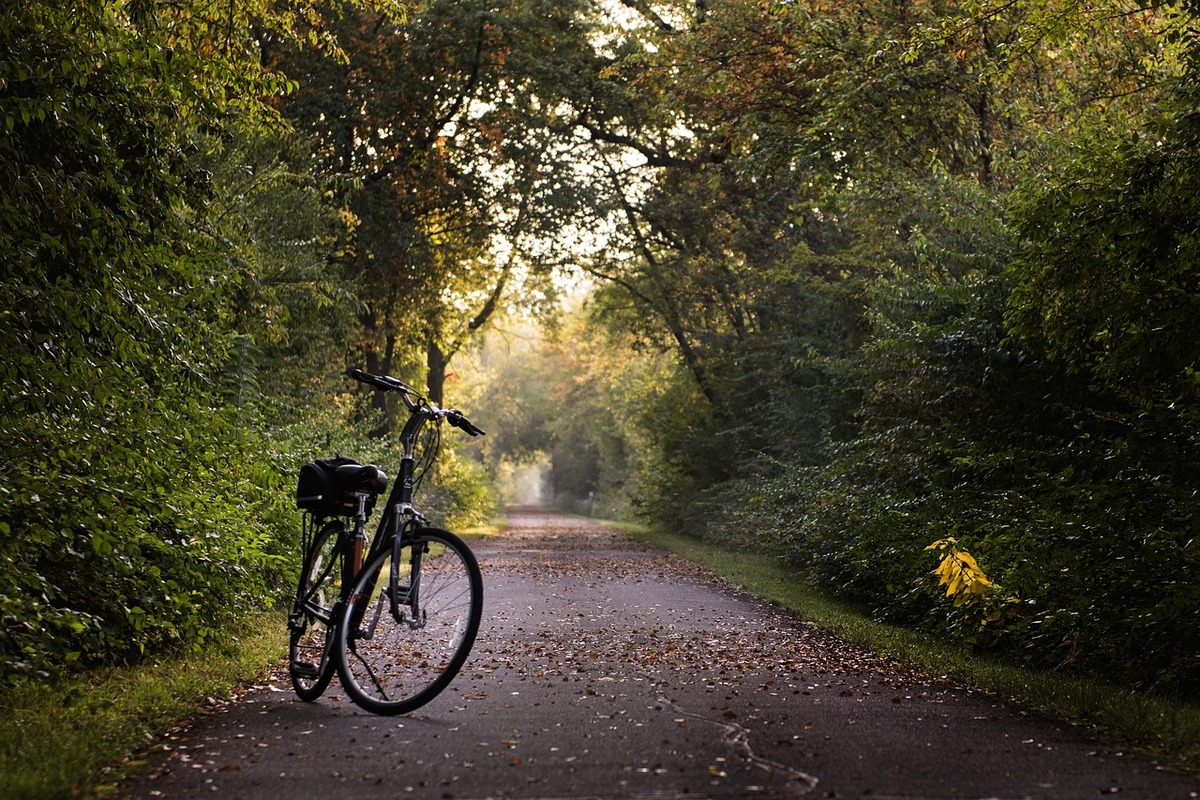Asphalt vs. Concrete for Biker Trail Paving

Why should I build a trail?
Bike trails are growing in popularity, and for good reason: they increase both quality of life and value of nearby businesses, wherever they are. The benefits of bike trails have been extensively studied and documented over the past few decades. For example, one University of Cincinnati Master’s Thesis found that home value increases by $7.05 for every foot nearer to a bike trail it was. That test was performed specifically on a trail near Cincinnati’s Little Miami River. In addition, 70% of people say that it’s important for them to live near a trail. Not only do property values increase alongside proximity to trails, but businesses can also expect more customers the nearer to a trail they are. So, if you were considering installing a bike trail, here are some things you’ll want to know:
- Trails are extremely effective at getting people near them to exercise
- This happens across all ages and demographics
- This happens across all ages and demographics
- Trails pay for themselves in reduced healthcare costs
- A 1999 study showed that every $1 spent on a trail resulted in a $3 return on medical benefits
- A 1999 study showed that every $1 spent on a trail resulted in a $3 return on medical benefits
- Trails attract wealthy people
- A huge percentage of people who frequent bike trails are wealthy
- A huge percentage of people who frequent bike trails are wealthy
- Trails attract people from out of town
- Trails make it more likely that people from out of the area will visit
- Trails bring money to the local economy
- If people from out of town do visit your area, they will spend an average of $16 per day. If they end up staying overnight, that number jumps to over $100 per day
- If people from out of town do visit your area, they will spend an average of $16 per day. If they end up staying overnight, that number jumps to over $100 per day
- Trails are good for the environment
- When given the option, many people will choose to walk, run, or bike to wherever they are going. This reduces emissions in the area
What material should I use for my trail?
The two most popular building materials for trails are asphalt and concrete. They have both been around for the same amount of time—about 300 years—and they both have large presences in everyday life. Asphalt is commonly found in roads—in fact, 95% of the paved roads in America use asphalt—and concrete is mainly used for sidewalks. Despite that, there are debates about which material is better for trails, and we hope to clear that up for you today.
Strengths of asphalt and concrete
Asphalt is the most common material for bike paths today, and with good reason—it has the best cost/lifespan ratio of all the materials. Also, it sets quickly. An asphalt trail is ready for riders the day after it is put down. Another of asphalt’s strengths is that it is easily and cheaply repaired, so a large crack doesn’t mean that you need to get your trail redone.
Finally, asphalt is safer than concrete. Certain kinds of asphalt, like porous asphalt, are extremely resilient to freezing and collecting snow. Asphalt is naturally more porous than concrete, and snow can more easily melt and run off there.
Concrete also has some strengths worth mentioning. It lasts about 30% longer than asphalt, and requires no sort of maintenance until it inevitably cracks.
Both asphalt and concrete can be colored or styled to look however people want, though this drives up costs considerably.
Weaknesses of asphalt and concrete
Though we believe asphalt is definitely the best tool for the job, it doesn’t come without its weaknesses. First of all, asphalt does not last as long as concrete does. However, most of asphalts degradation comes from constantly being driven over by cars. Because asphalt is naturally more flexible than concrete (asphalt in its natural form is actually a liquid), the continual pressure eventually causes it to deform. This is the biggest shortener of asphalt’s lifespan. However, with bike trails, this doesn’t happen. Bikes weigh a fraction of what cars do, so they don’t put enough pressure on asphalt to contribute to its degradation.
Another weakness of asphalt is that it does require some maintenance. Most professionals say that asphalt requires sealing every two to three years, though some argue that this is an unnecessary procedure. Even at its best, though, an asphalt trail won’t last as long as a concrete trail.
Concrete also has its weaknesses. It cannot be repaired at all, so concrete with a large crack has to be completely replaced, which is costly and labor-intensive. This is why sidewalks and other concrete pathways are poured in sections. It’s much, much easier to replace a section than an entire sidewalk or driveway.
Concrete’s biggest weakness is its cost. It is usually about double the cost of asphalt, and because it doesn’t last twice as asphalt, it just doesn’t provide the same value that asphalt does.
Asphalt vs. Concrete Comparison Chart
Asphalt
- ~$4 per square foot
- Roughly 20-year lifespan (includes necessary interim repairs)
- Can use the day after it is put down
- Requires resealing every few years
- Can be repaired
Concrete
- ~$9 per square footer
- Roughly 30 year lifespan
- Takes weeks to set
- Maintenance-free
- Cracked sections must be replaced
If you are considering getting a trail paved, you’ll want to make sure it’s done right. J.K. Meurer is the only paver in Cincinnati that has the equipment needed to pave bike paths. So, give us a call and we can talk about making your bike path a reality.

